PHOTO INSET
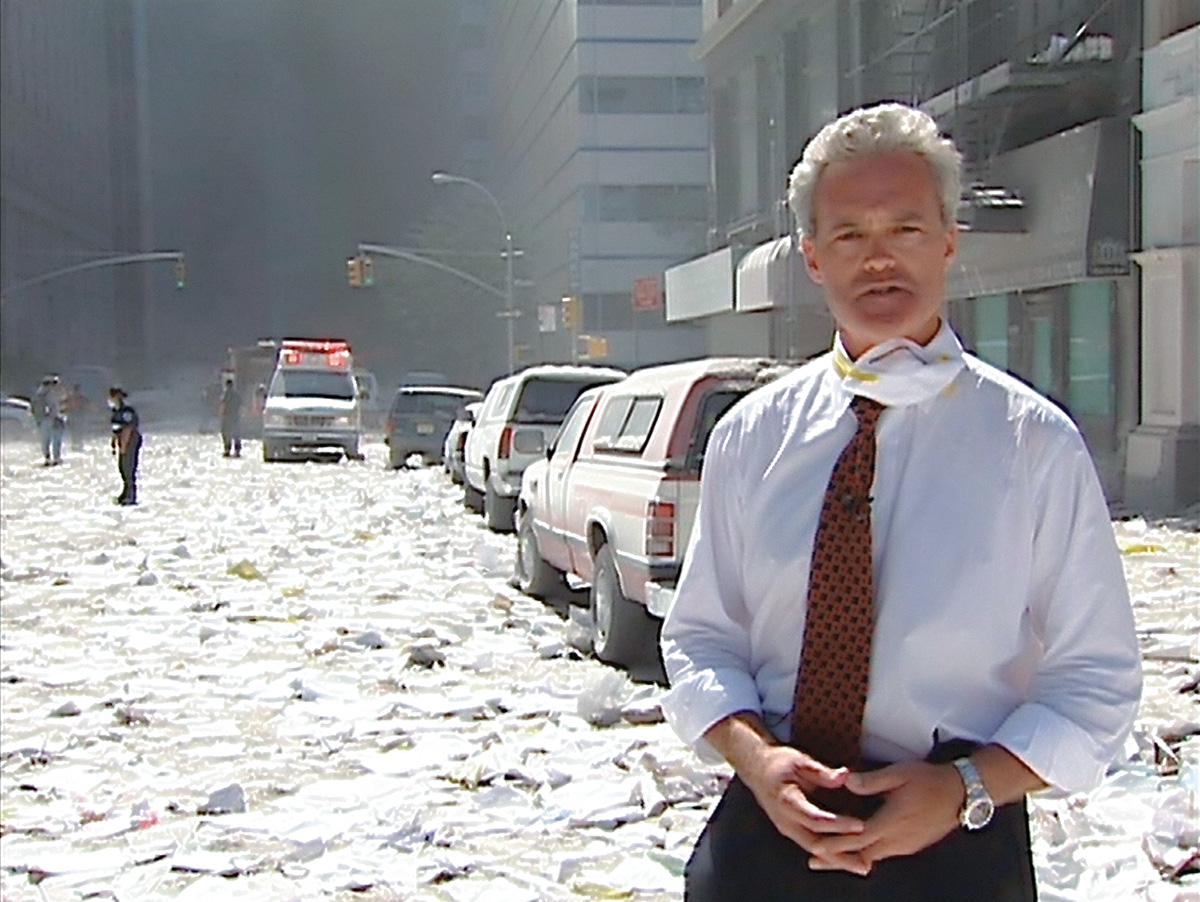
Witnessing the collapse of World Trade Center tower one was the most wrenching experience of my life. CBS News was on the air for more than three days without a break. This was our finest hour.
Photo credit: CBS
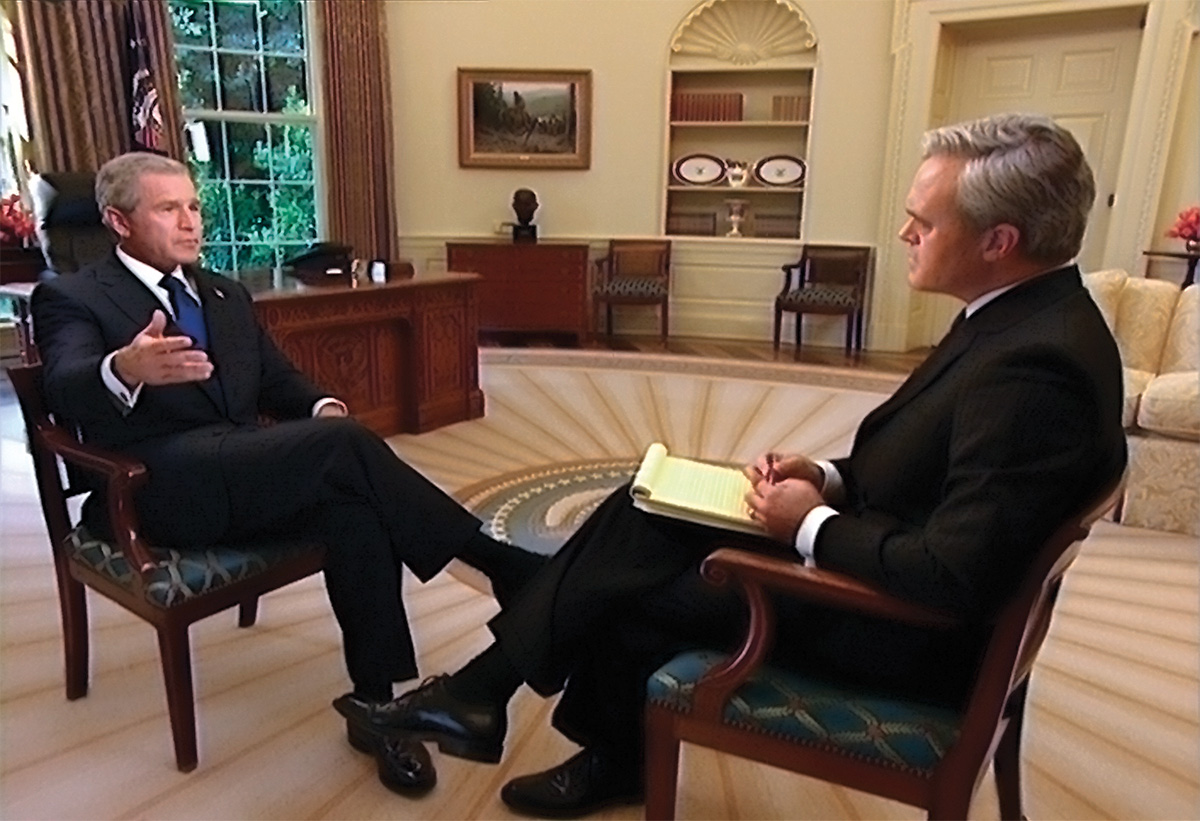
In September 2002, President George W. Bush and I spoke in the Oval Office for a 60 Minutes II documentary to air on the anniversary of 9/11. The president didn’t like my questions about Iraq. We would learn later he was already far down the road to starting another war.
Photo credit: CBS
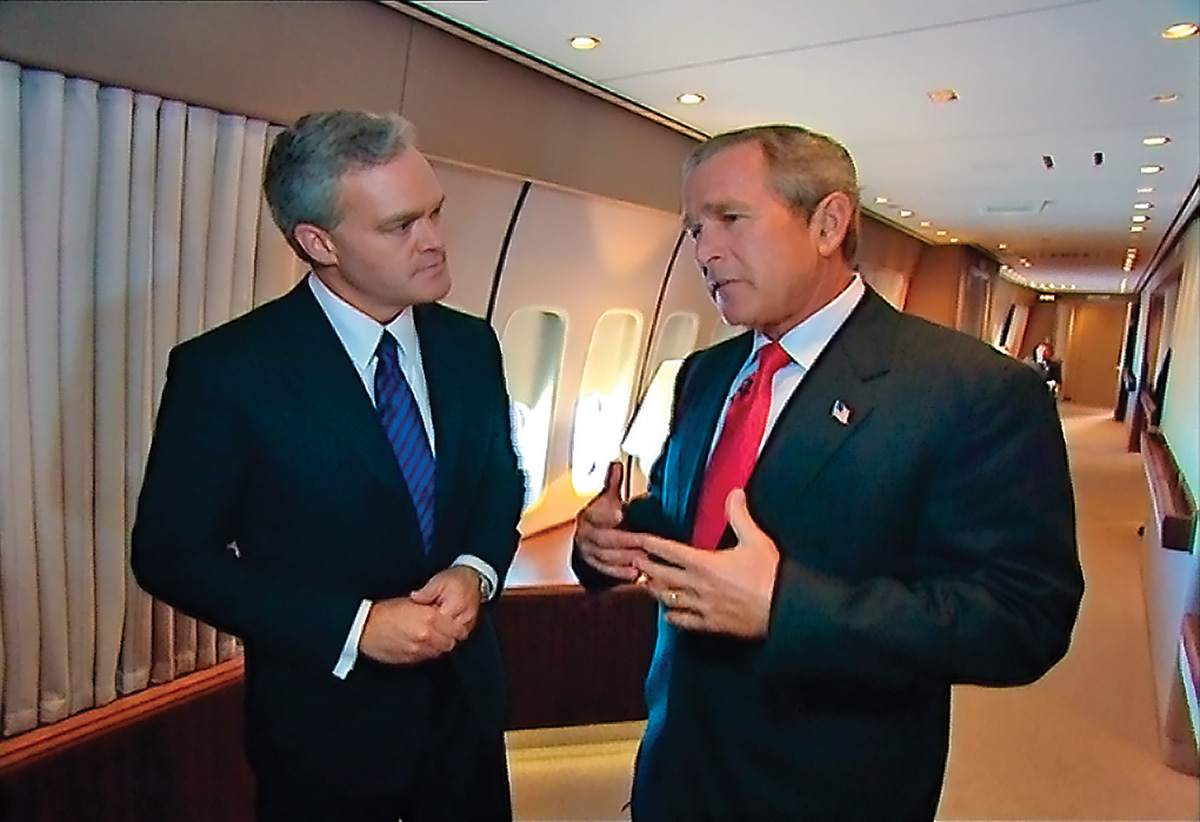
President Bush gave us full access to Air Force One for our 60 Minutes II hour on the commander in chief’s response on 9/11. This was the biggest role in American history for Air Force One since Lyndon B. Johnson was sworn into office after the assassination of John F. Kennedy.
Photo credit: CBS
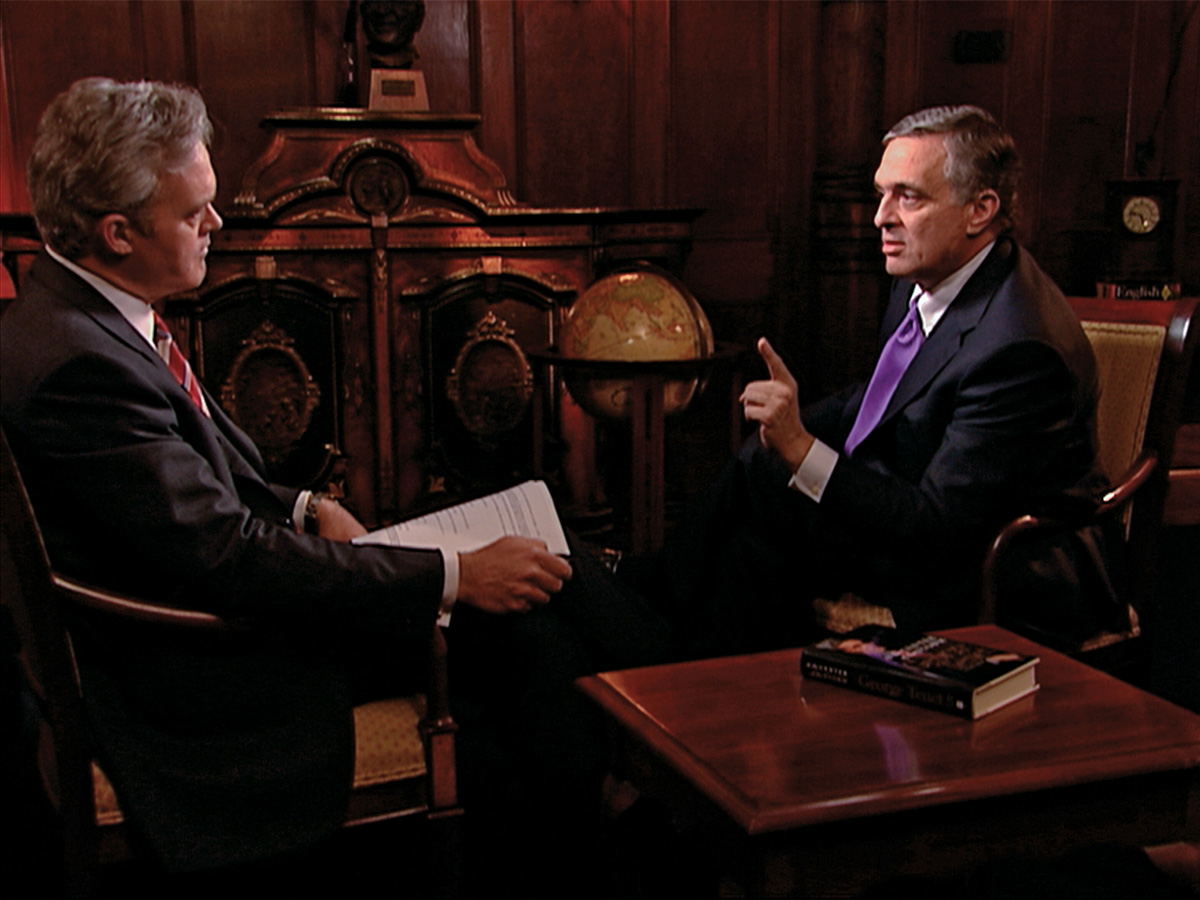
My 2007 interview with George Tenet, the former director of the CIA, was among the most contentious of my career. Tenet had never been interviewed about the CIA’s failure to detect the 9/11 plot nor the flawed intelligence that led to the war with Iraq.
Photo credit: CBS
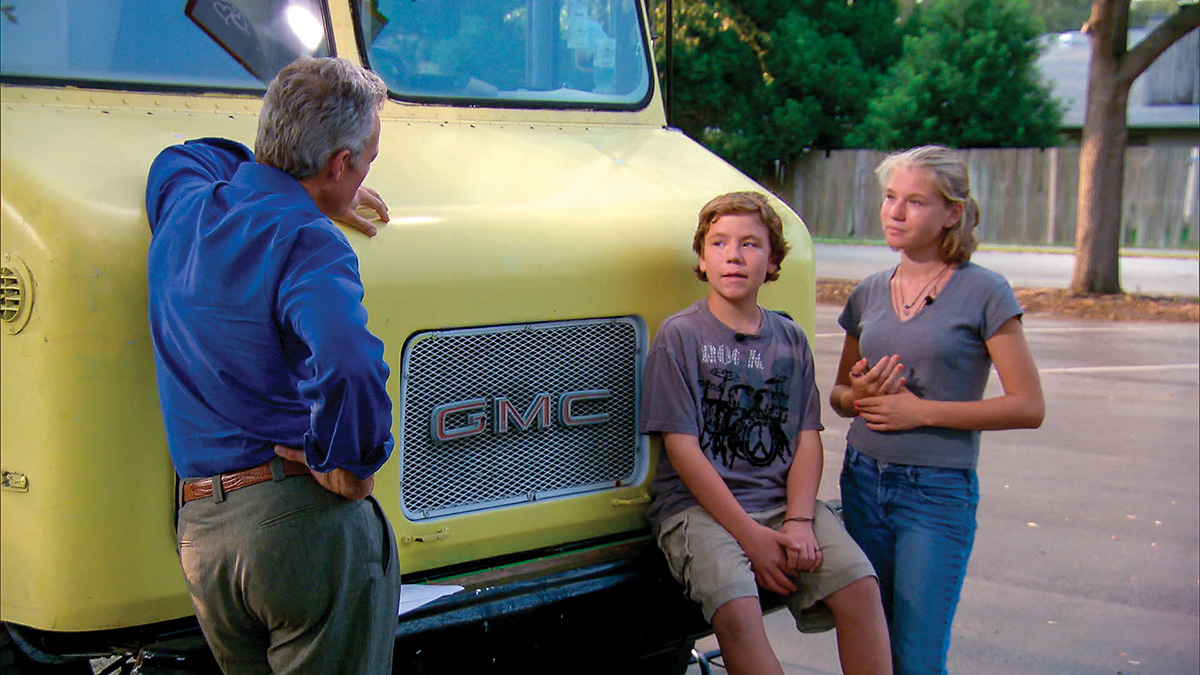
Austin and Arielle Metzger lived in this GMC van after their father lost his construction job in the Great Recession. I was so impressed with their spirit. They told me other kids were worse off in central Florida. “It’s just life, right?” Arielle said. A university president who saw the story gave them full scholarships.
Photo credit: CBS
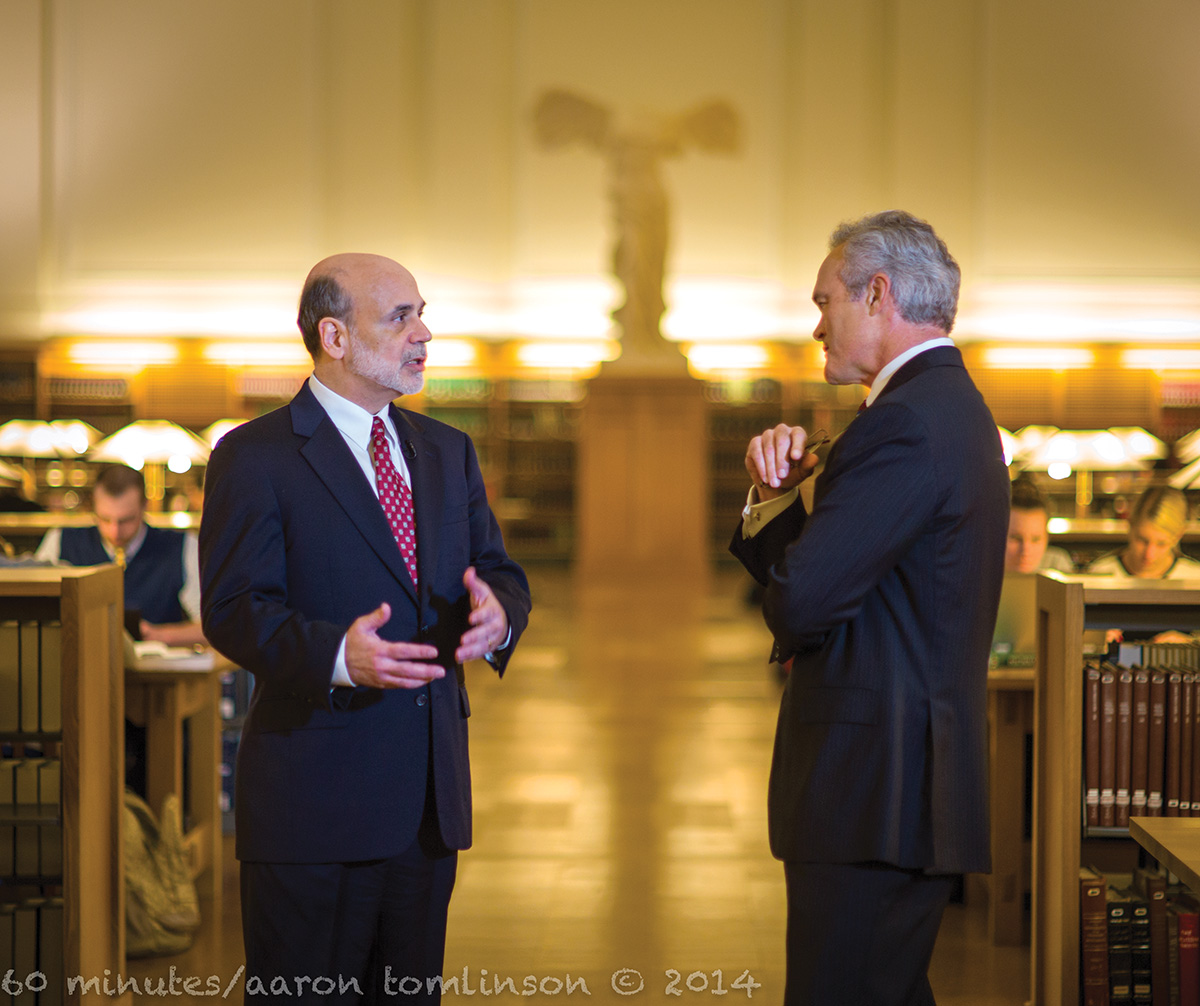
Federal Reserve chairman Ben Bernanke broke a long-standing tradition and agreed to speak to me for 60 Minutes. In the grip of the Great Recession, Bernanke realized the Federal Reserve had a duty to be transparent to the people it served.
Photo credit: Aaron Tomlinson
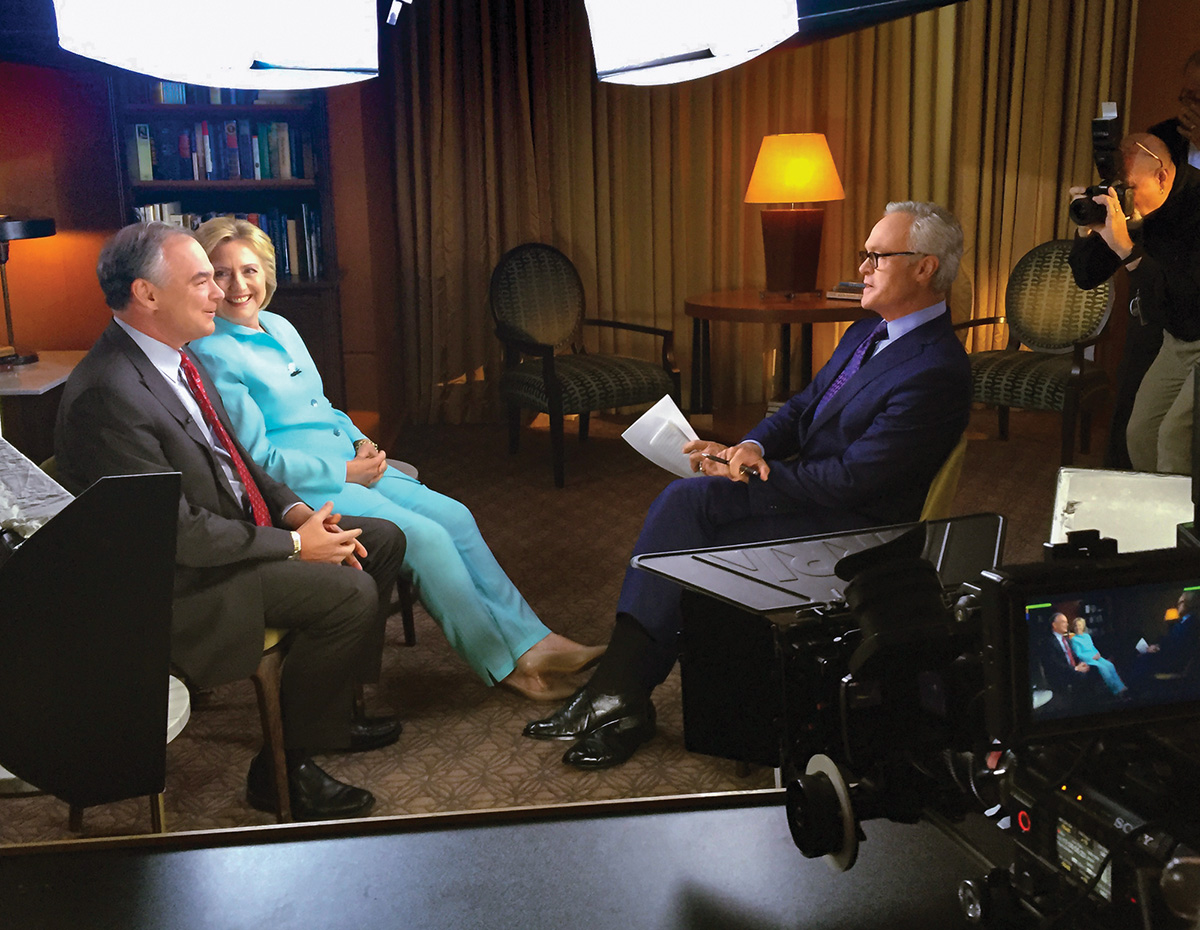
On the eve of the Democratic National Convention, I asked Hillary Clinton and running mate Tim Kaine the first questions about the Democratic National Committee documents stolen by Russian military intelligence. Secretary Clinton would be so offended by my questions about her honesty that she refused to appear on 60 Minutes with me a few weeks before Election Day.
Photo credit: CBS
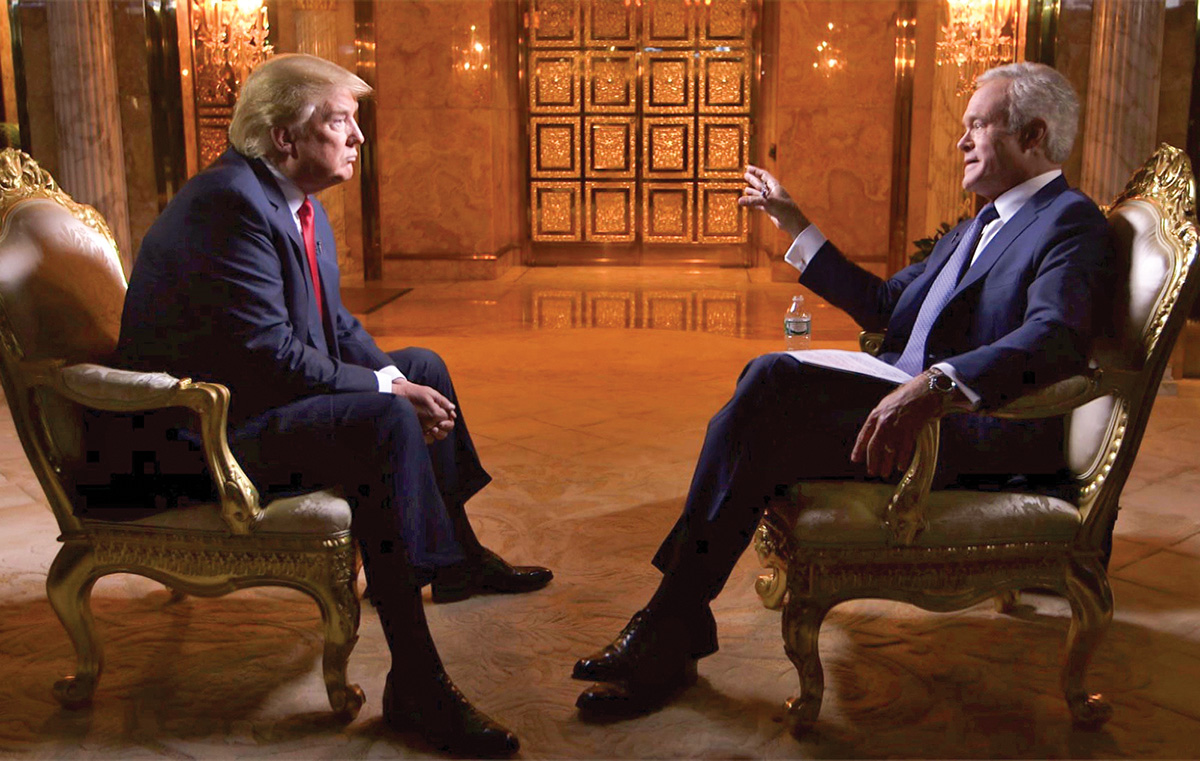
In my first interview with Donald Trump I was amazed by the false picture of America he painted. His Manhattan apartment reminded me of the over-the-top gilded palaces of Saddam Hussein.
Photo credit: CBS

We originated the CBS Evening News from both of the 2016 national party conventions. In his acceptance speech, Donald Trump claimed he understood America’s challenges so well that “Only I can fix it.” Russia’s well-timed dump of stolen Democratic emails alienated the legion of Bernie Sanders supporters that Hillary Clinton would need in the run-up to Election Day.
Photo credit: CBS
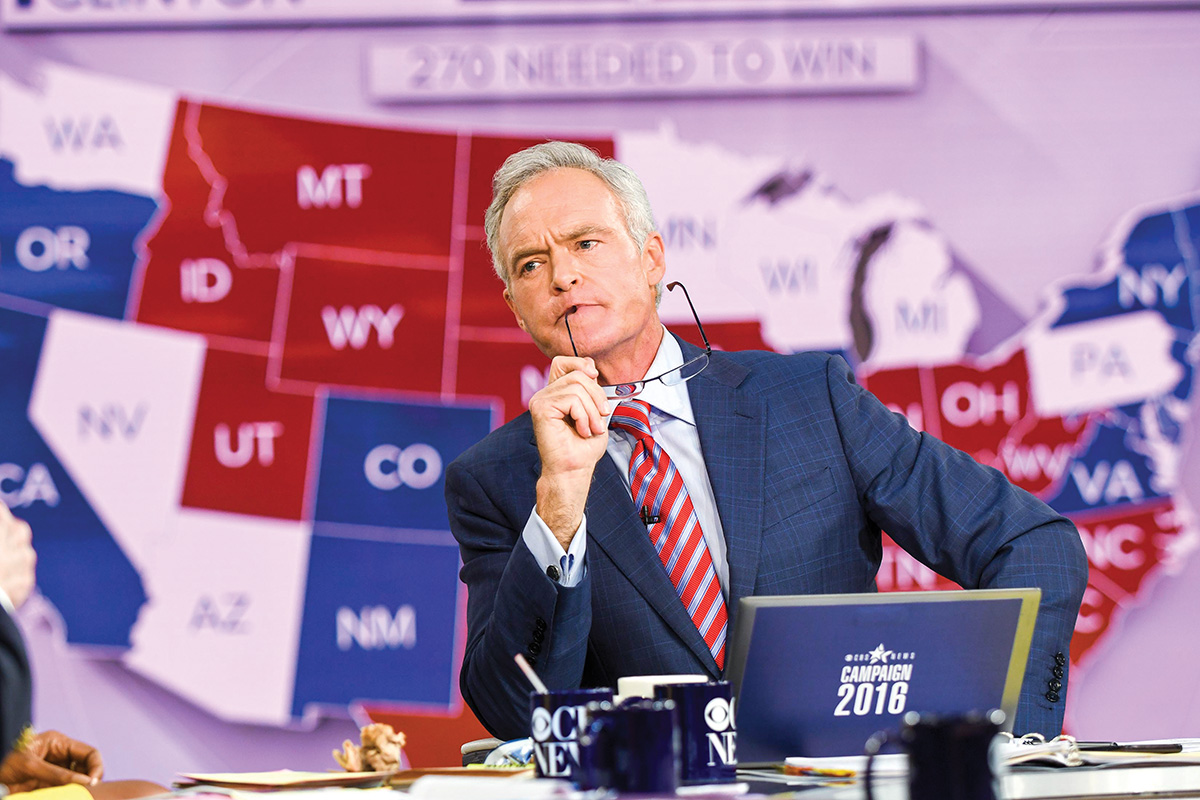
Anchoring CBS News coverage of Election Night 2016 was a challenge. The vote totals in swing states were running too close to call well past midnight. You can see on the map behind me that Wisconsin, Michigan and Pennsylvania had not been decided. By razor-thin margins, those states would give Donald Trump his victory in the Electoral College.
Photo credit: CBS
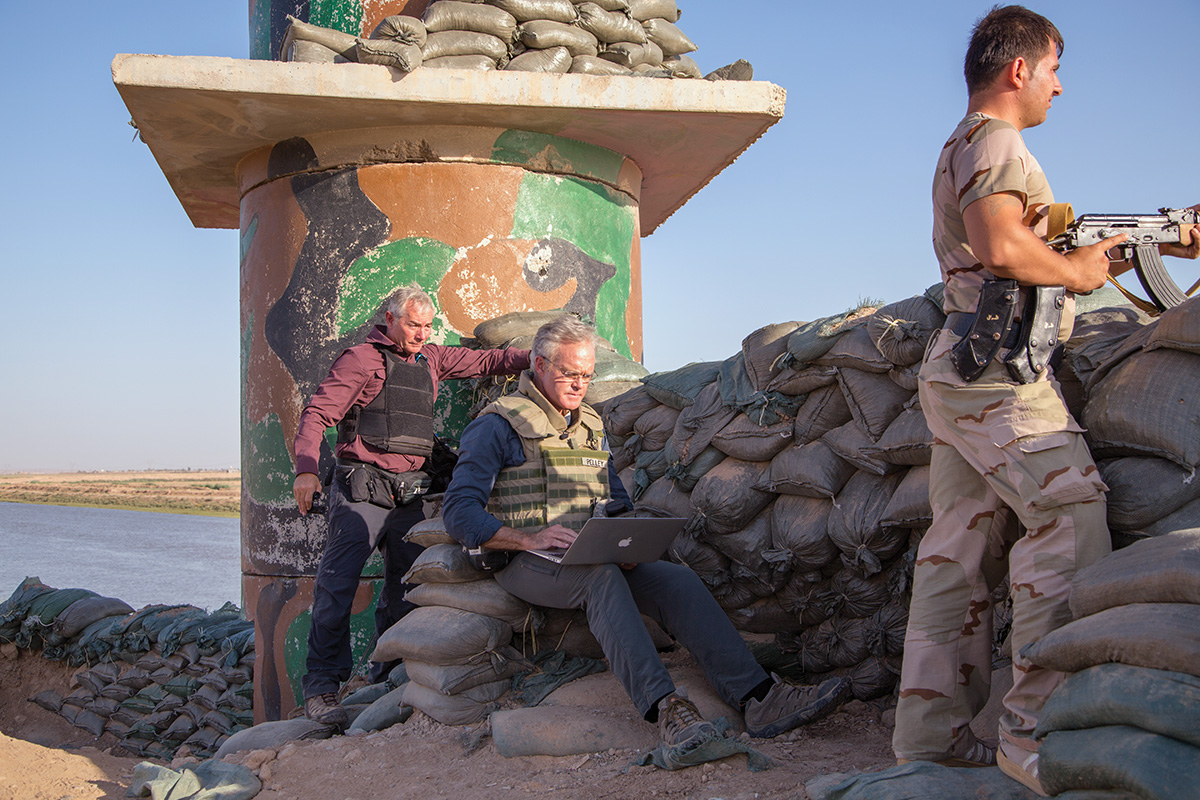
Sandbags mark the line where the Kurdish Peshmerga stopped the advance of ISIS or Islamic State into Northern Iraq. I’m writing copy that I’m planning to read to the camera in a “stand-up” for 60 Minutes. It was on this trip that we discovered refugee Nadia Murad, who would go on to win the Nobel Peace Prize. CBS News security officer Geoff Mabberley is watching my back.
Photo credit: Eric Kerchner

For our 60 Minutes story “Searching for Jacob,” cameraman Ian Robbie and I rode into Sudan with rebels fighting the government. We discovered evidence of the government-sponsored genocide that was killing thousands in the Darfur region. In gratitude, the rebels treated us to a meal of roast camel.
Photo credit: Shawn Efran
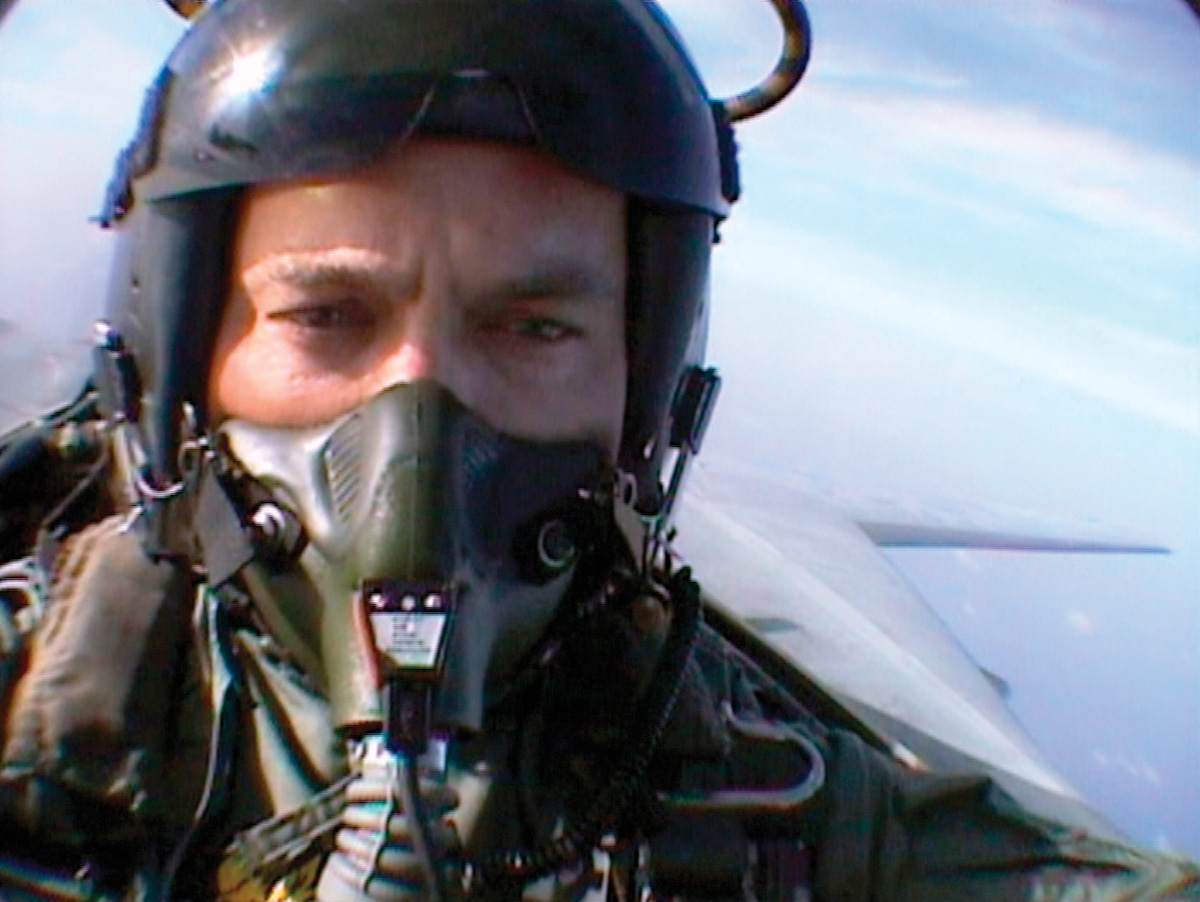
I’ve had the wonderful privilege of flying with the US Navy, Marine Corps, Army, Air Force and Coast Guard. This is the backseat of a navy F-14 shortly after we catapulted off the deck of the USS Eisenhower in the Atlantic. From the front seat, Lieutenant Commander Tony Ludovici was eager to show me what his fighter could do. We flew supersonic. We flew upside down. But I couldn’t imagine how Ludovici was going to land on what looked like a postage stamp moving across the sea.
Photo credit: CBS
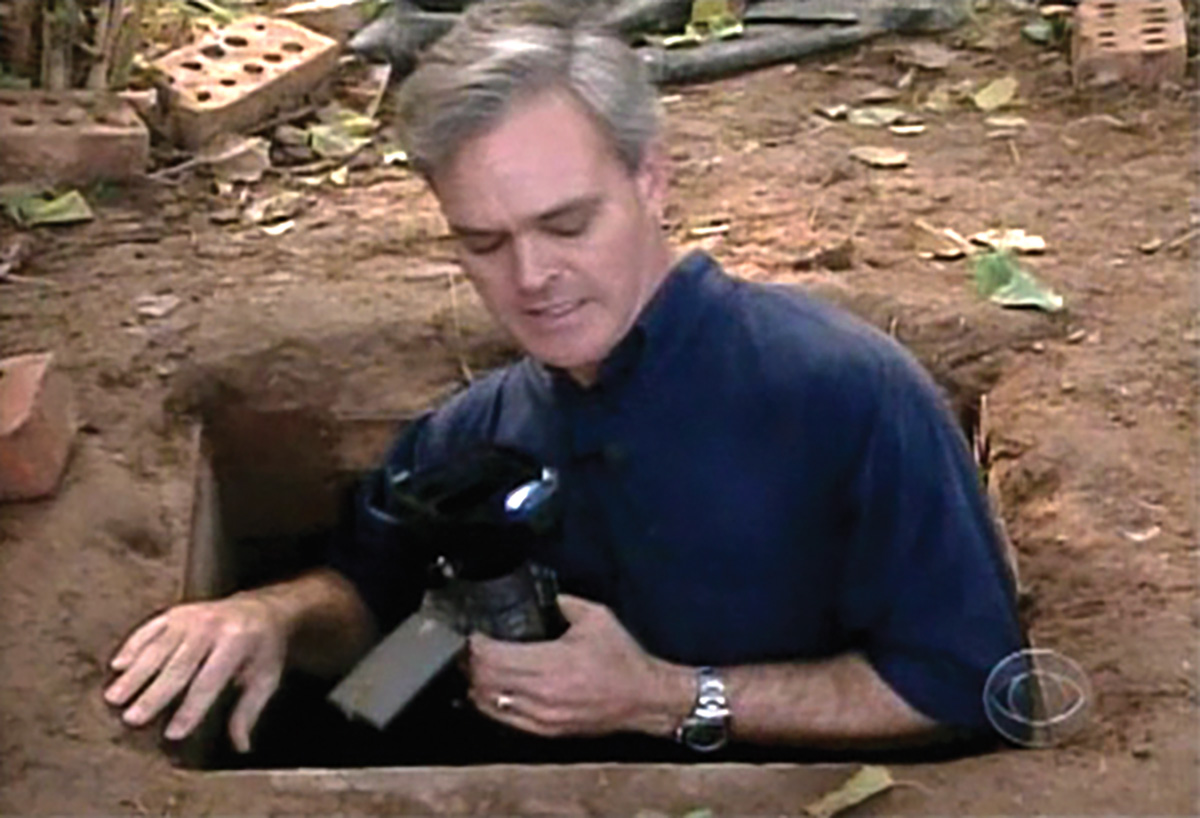
In December 2003, Bill Owens and I rushed back to Iraq to cover the capture of Saddam Hussein. Soldiers of the 4th Infantry Division found him hiding in this hole near the former dictator’s hometown, Tikrit. I took a camera into the horizontal hiding space, which had the dimensions of a coffin and a single battery-powered light.
Photo credit: CBS
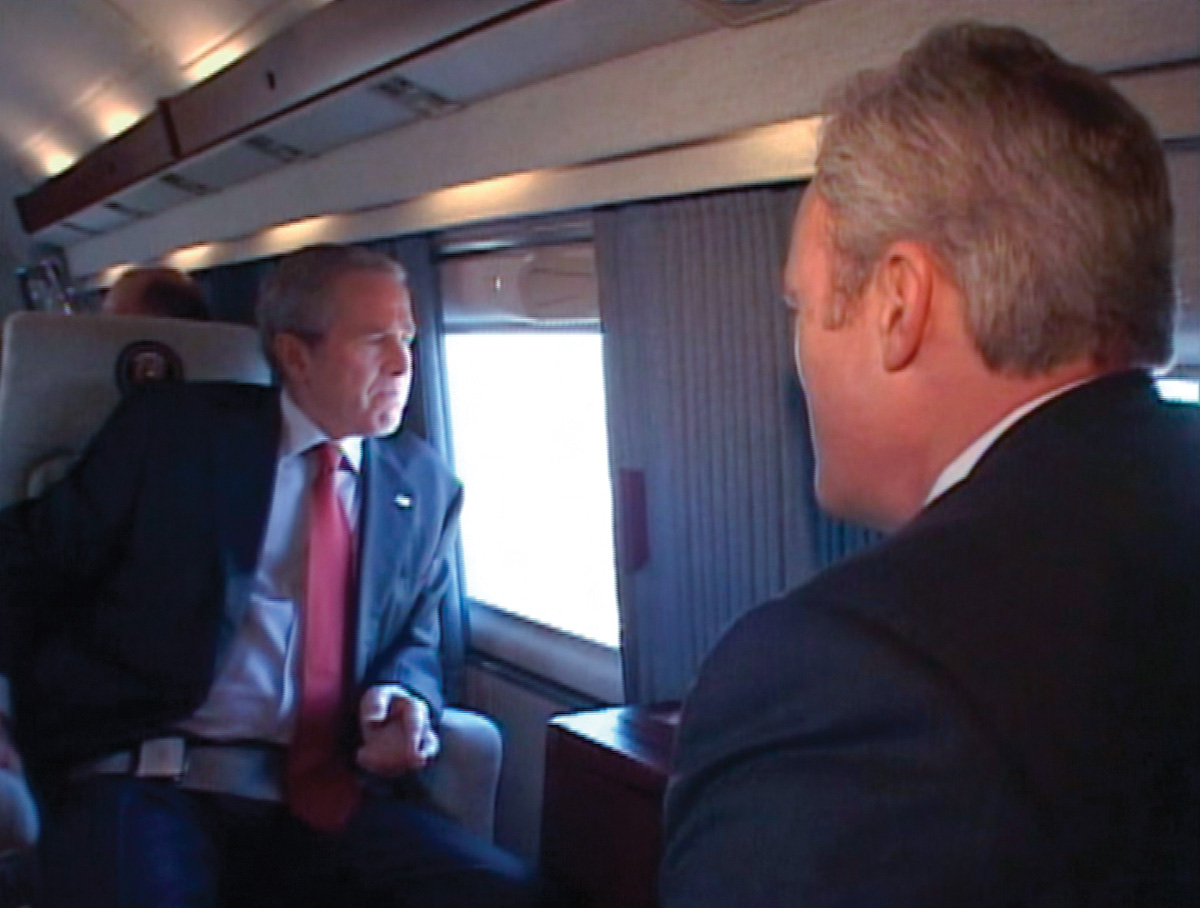
Aboard Marine One, the presidential helicopter, President George W. Bush and I discussed his decision to send more troops to Iraq. The president wanted to explain his reasoning on 60 Minutes. The weight of the war was showing.
Photo credit: George Christian/CBS
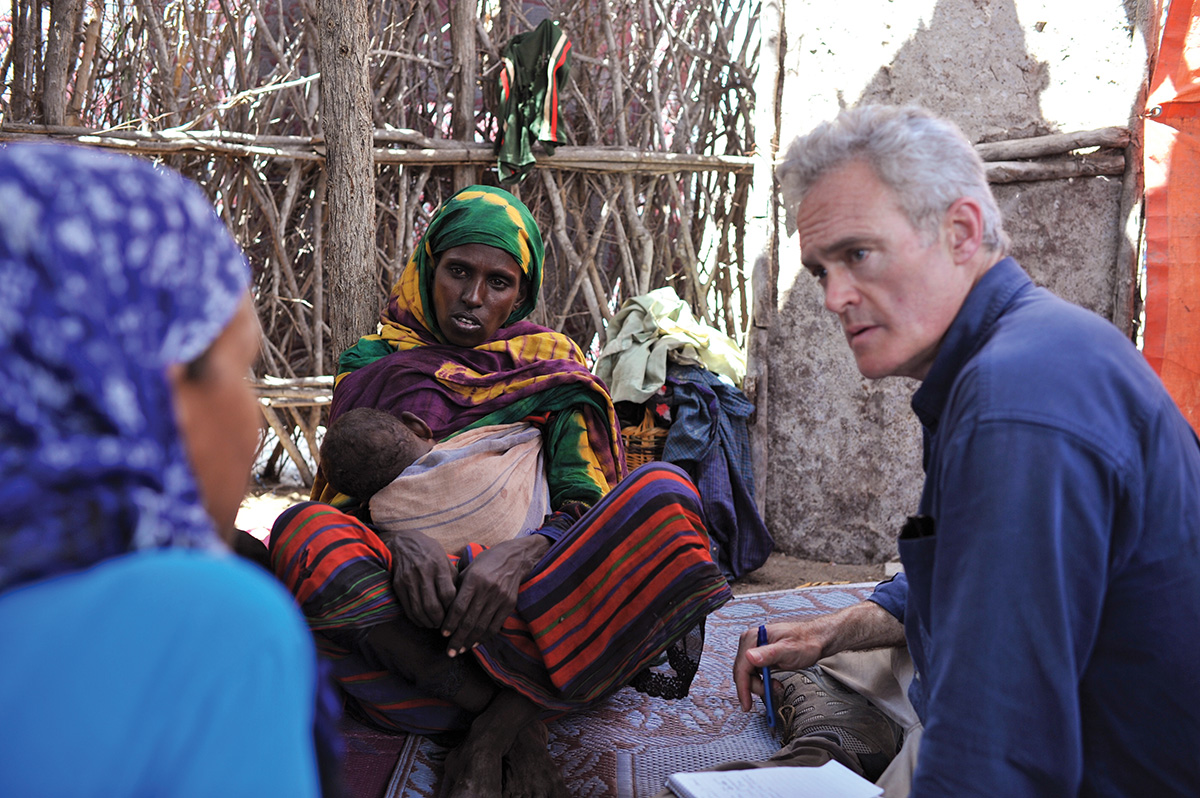
This mother told me she had buried some of her children on the long march from her village in Somalia. Refugees were walking for weeks to flee the Somali civil war for the safety of Kenyan refugee camps. With the help of a rebel group, I entered Somalia and reached this United Nations emergency feeding station on the refugee route.

I anchored the CBS Evening News from Afghanistan on the tenth anniversary of the war. The extraordinary producer, Mike Solmsen, could get the broadcast on the air from any point on the earth. The vehicle behind us is an MRAP armored personnel carrier pushing a device designed to detonate land mines.
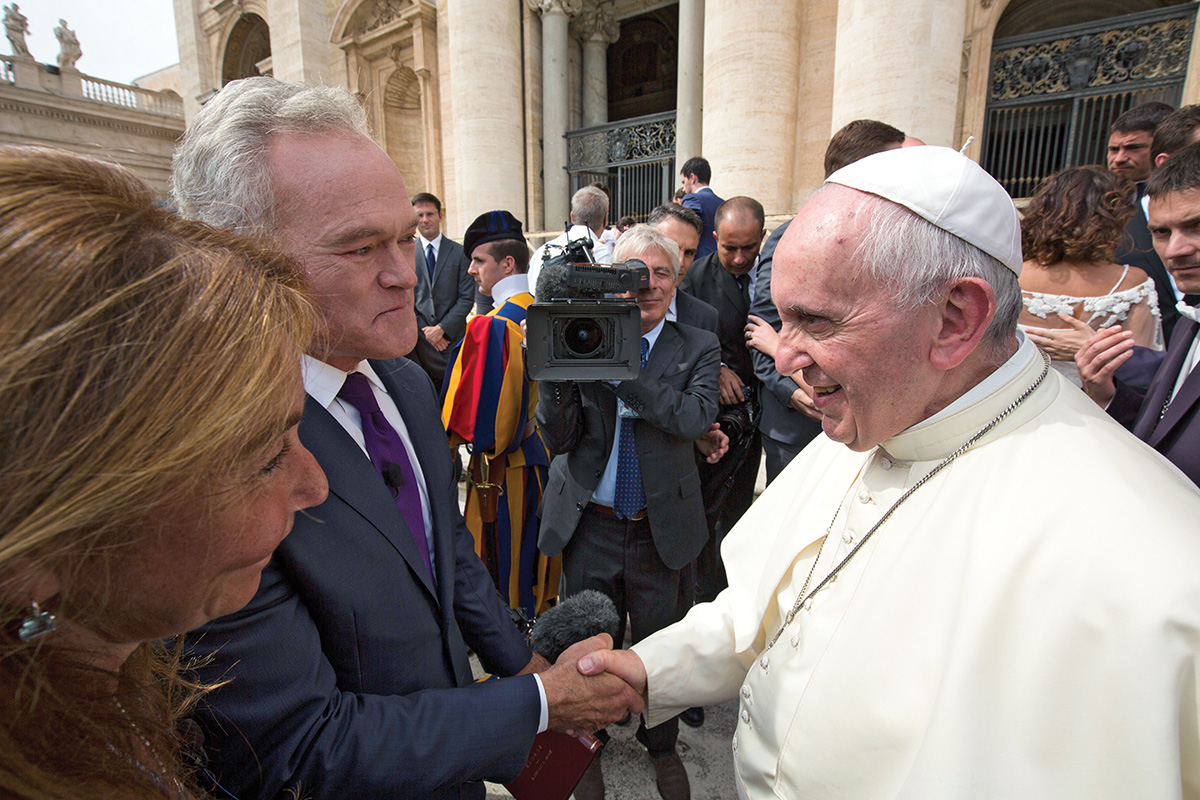
I met Pope Francis in St. Peter’s Square on the eve of his visit to the United States. Associate producer Sabina Castelfranco, left, arranged the introduction and handled the translation to Spanish. As a gift, I gave the pope a leather-bound copy of Steinbeck’s The Grapes of Wrath.
Photo credit: Vatican
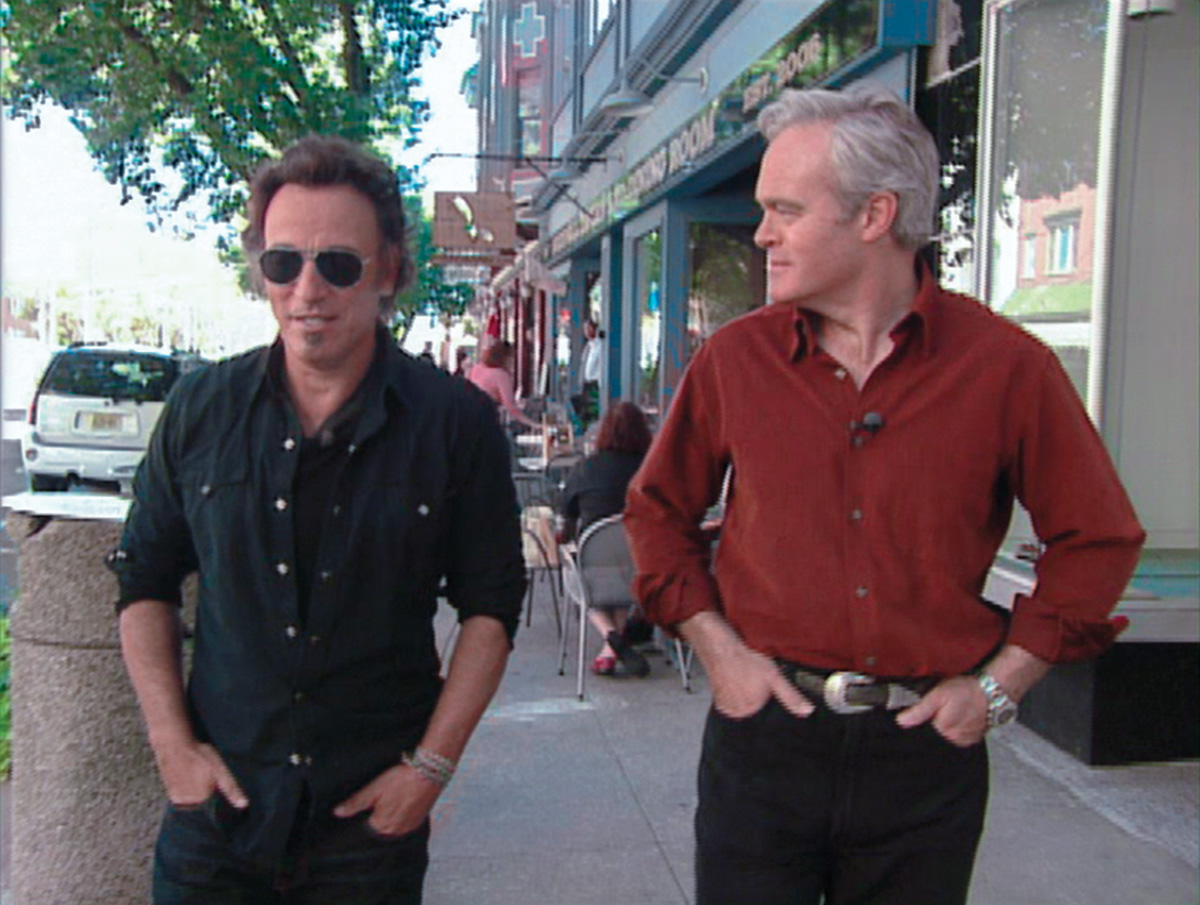
Bruce Springsteen and I walked the main street of Asbury Park, New Jersey. Somehow the sunglasses didn’t keep us from being mobbed by fans within minutes. I expected to meet a rock star, but what impressed me more was the philosopher and poet who simply could not stop writing.
Photo credit: CBS
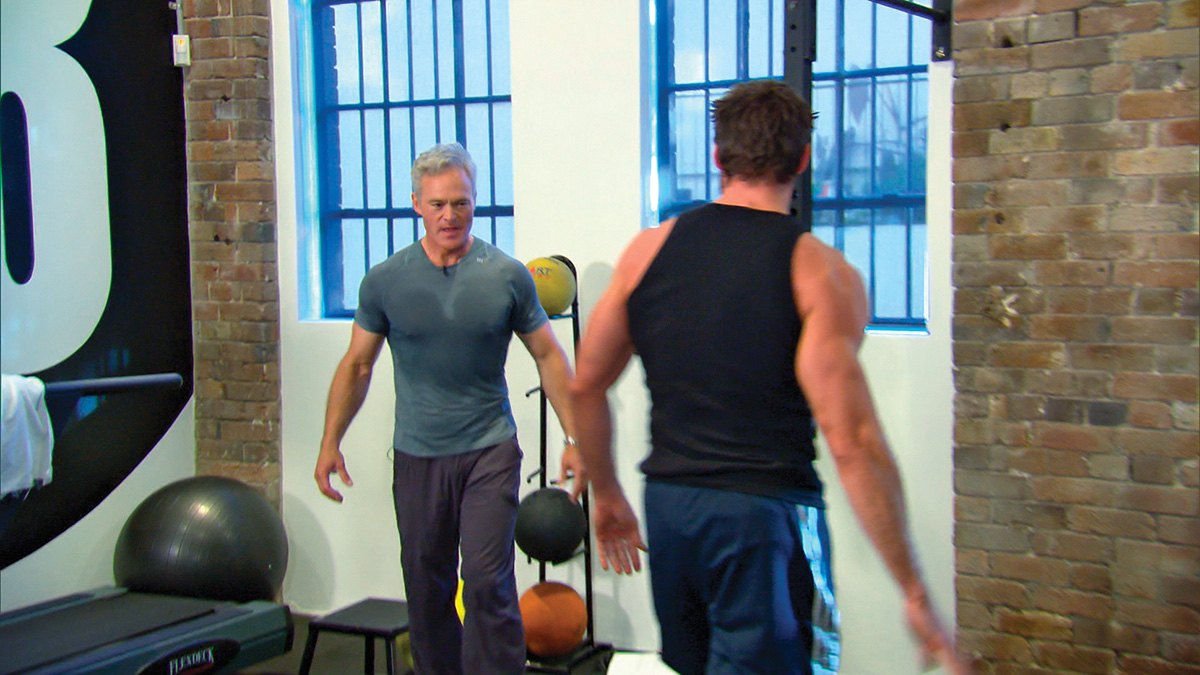
Fitness has always been my hobby, but Hugh Jackman wore me out with the routine he used to get into shape for his Wolverine movie role. Working out with Jackman in a Sydney gym sounded like a good idea for our 60 Minutes profile until I tried to match bicep curls with a man who plays a superhero. When my daughter saw this picture she said, “Oh, great. It’s Wolverine and Wolverine’s dad.”
Photo credit: CBS
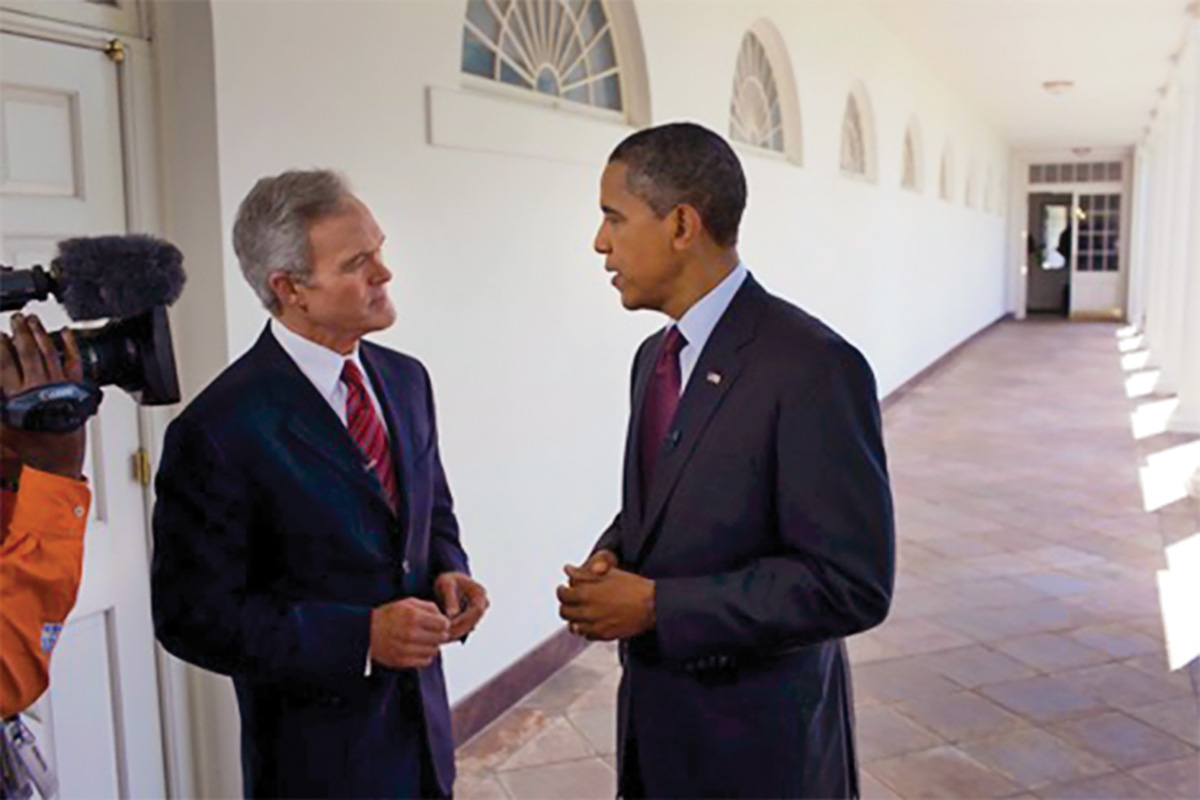
My interviews with President Obama were frequent, especially in his second term. Here, we are speaking in the colonnade by the Rose Garden. Reasonable people will disagree about his policies, but I always found him thoroughly informed on the issues and deeply thoughtful about his proposed solutions. He graced the nation with a virtually scandal-free White House and a role-model family.
Photo credit: CBS
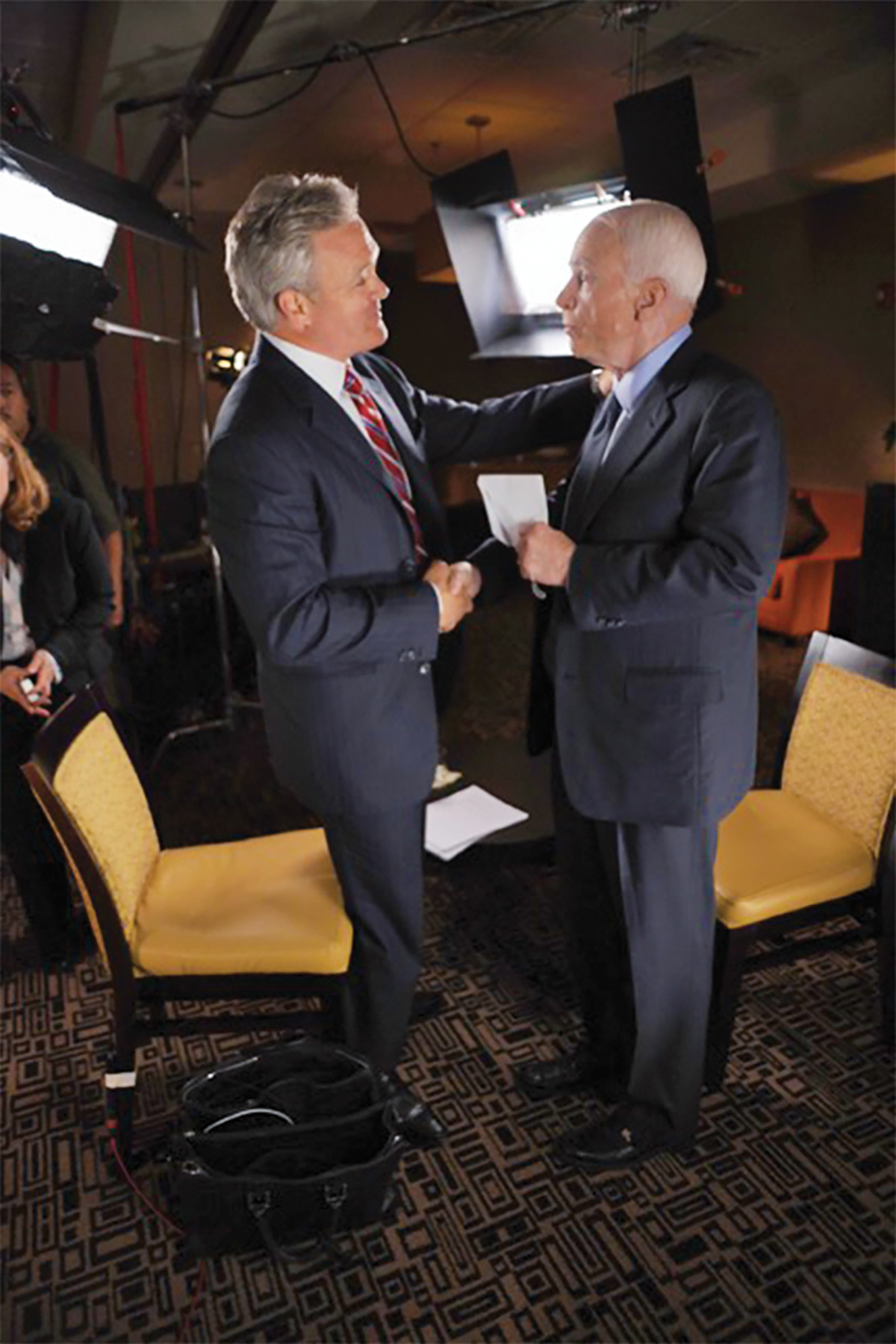
I got to know Senator John McCain while covering his 2008 presidential campaign for 60 Minutes. Rarely in politics these days do you find the combination of heroism, principle and zeal that comprised the senator from Arizona. He actively sought compromise with Democrats everywhere he could. His bill banning torture put America back on the side of its ideals. The 2008 election gave us the first African American president. That was a momentous achievement. But, in my view, John McCain would have also made a very fine president.
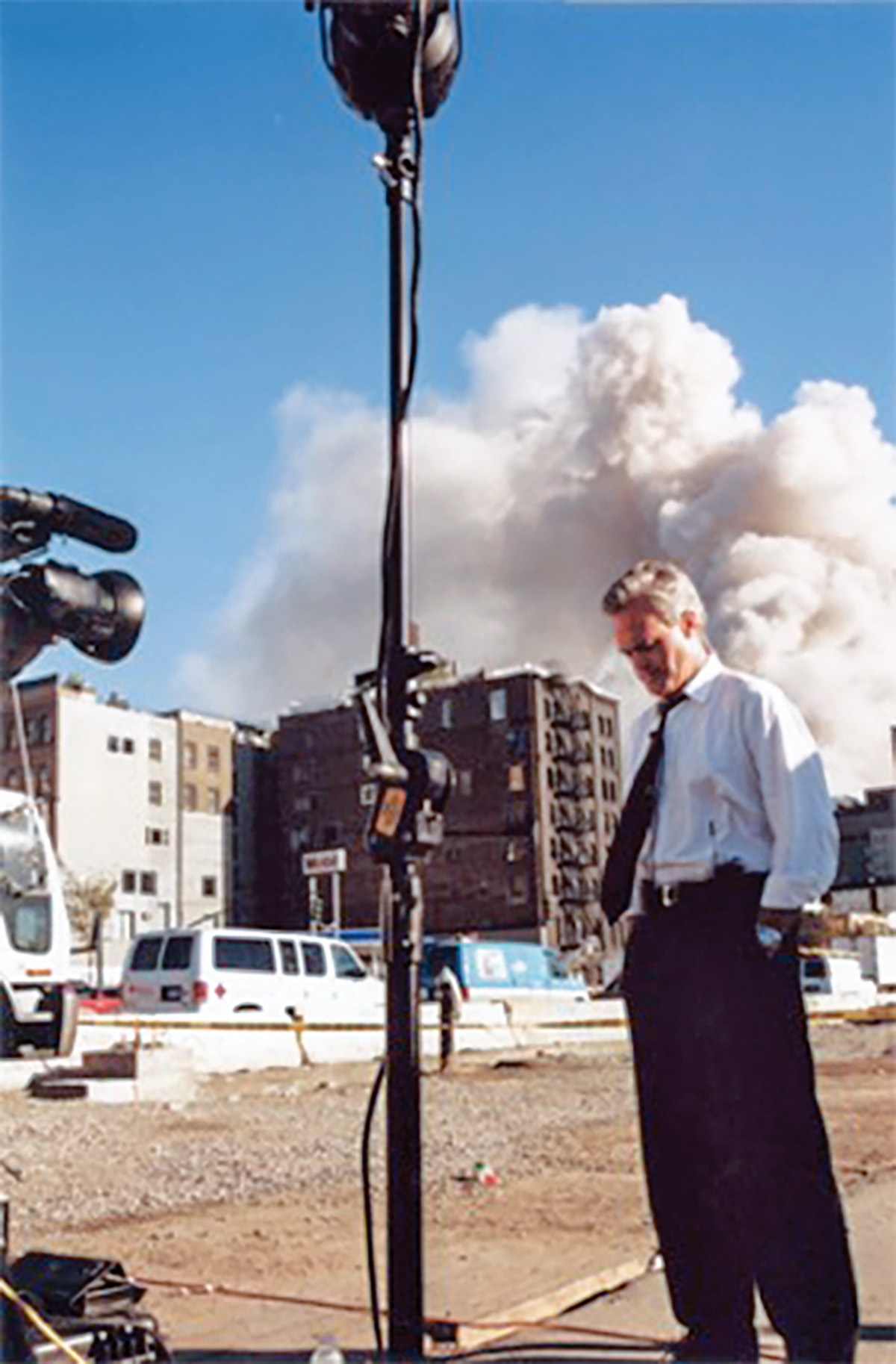
I joined CBS News in 1989. The Oklahoma City bombing in 1995 was, at the time, the deadliest terrorist assault on America. I would spend the next two years attempting to understand the motives of the bomber, Tim McVeigh. The month after his attack, I broadcast a special report on the controlled demolition of what remained of the Murrah Federal Building.
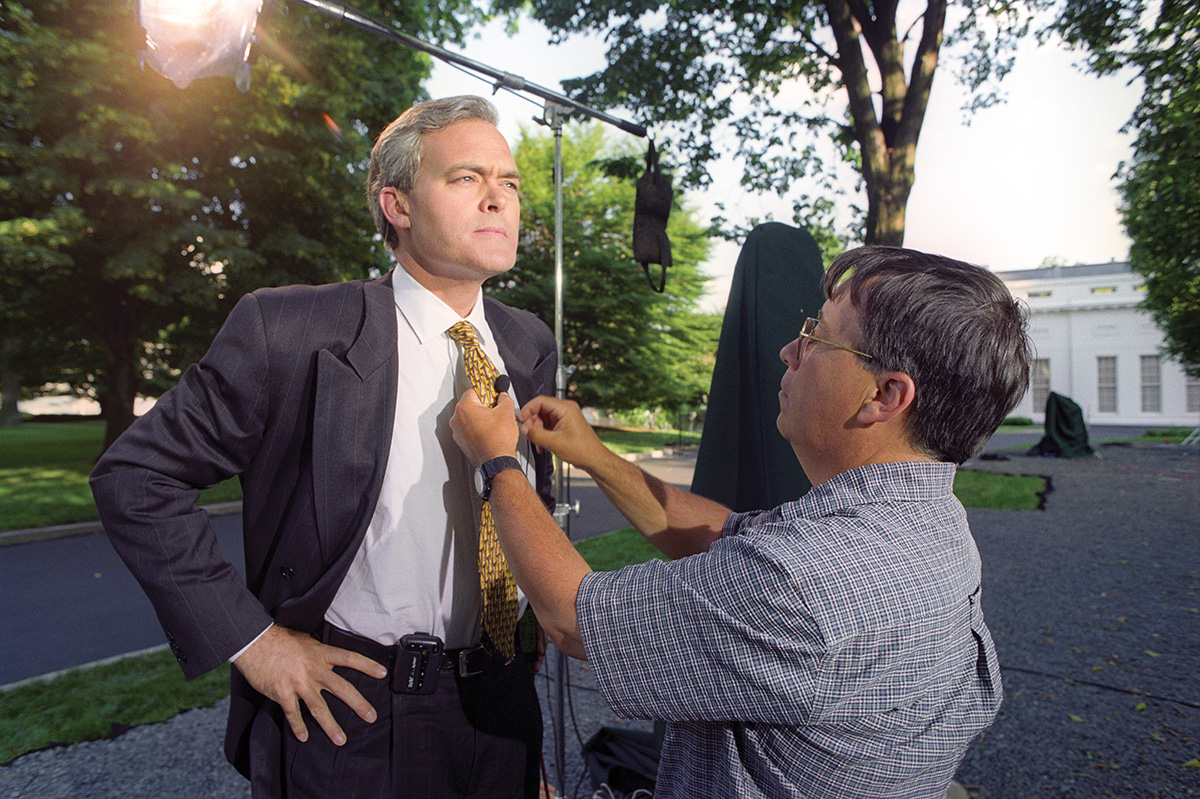
Soundman John Daily prepares for the Evening News broadcast on the north lawn of the White House. The West Wing is in the distance. In 1998, so many reporters from around the world came to cover the Lewinsky scandal that the National Park Service gave up tending the lawn and poured gravel over our “stand-up” location. We dubbed it Pebble Beach.
Photo credit: Carol Powers
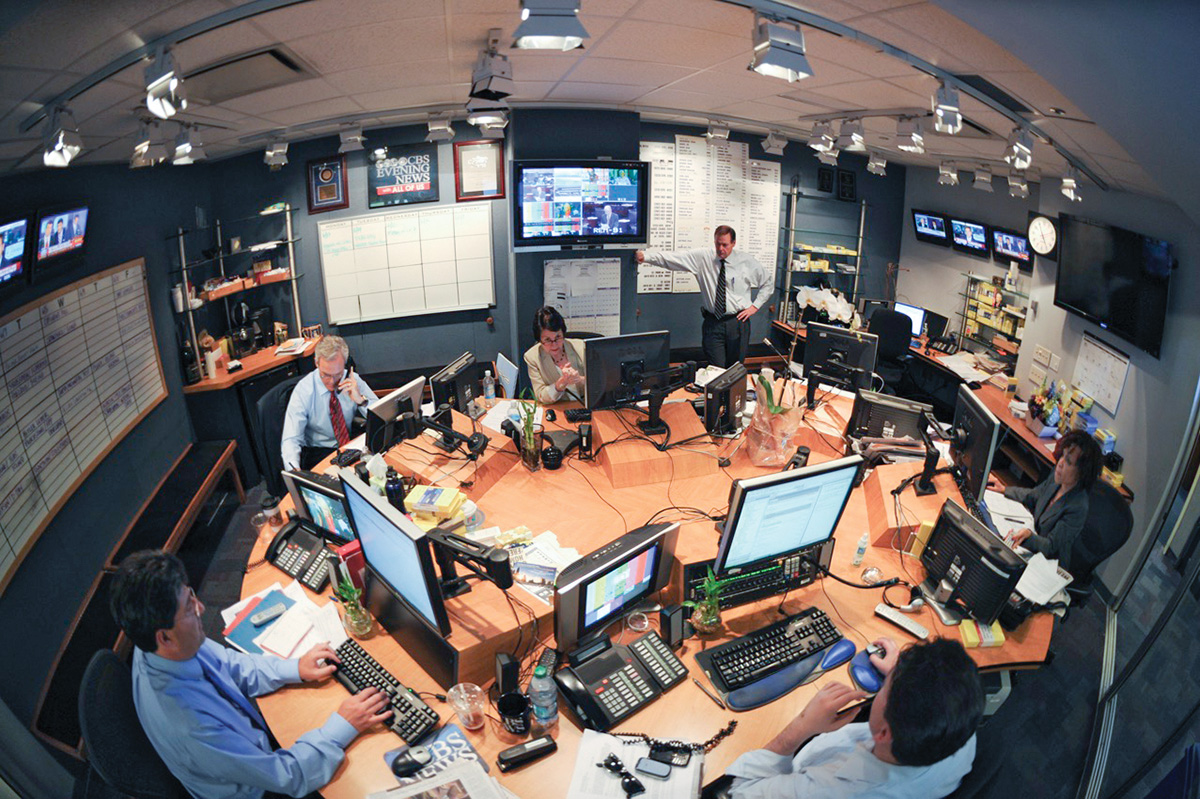
In 2011, I became the anchor and managing editor of the CBS Evening News. The “fishbowl” is the Evening News wheelhouse. To my left is Patricia Shevlin, arguably the most successful executive producer in the broadcast’s history. Her deputy, senior broadcast producer Jim McGlinchy, is standing. At the three o’clock position is senior producer Kim Godwin, the best newsroom manager and story producer I’ve had the pleasure to know. Back to my right, at the nine o’clock position, is senior producer Guy Campanile, who infused every script with clarity and accuracy.
Photo credit: Rob Fortunato
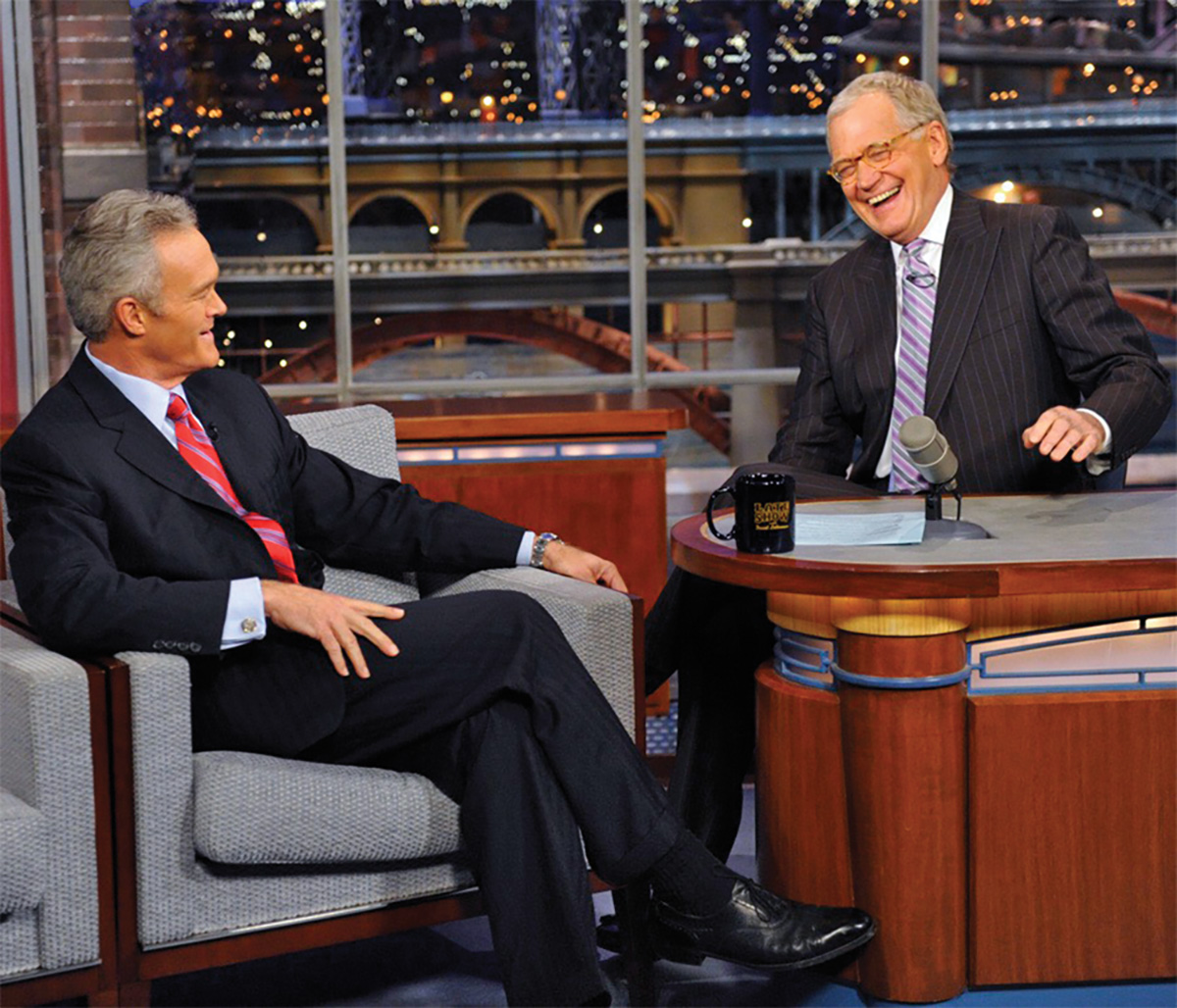
Shortly after I began the managing editor job, David Letterman invited me on The Late Show on CBS. He asked if I was nervous about my new responsibility. “Dave,” I said, “my daughter just turned sixteen and I’m teaching her how to drive. So, no, anchoring the CBS Evening News doesn’t make me nervous.”
Photo credit: CBS
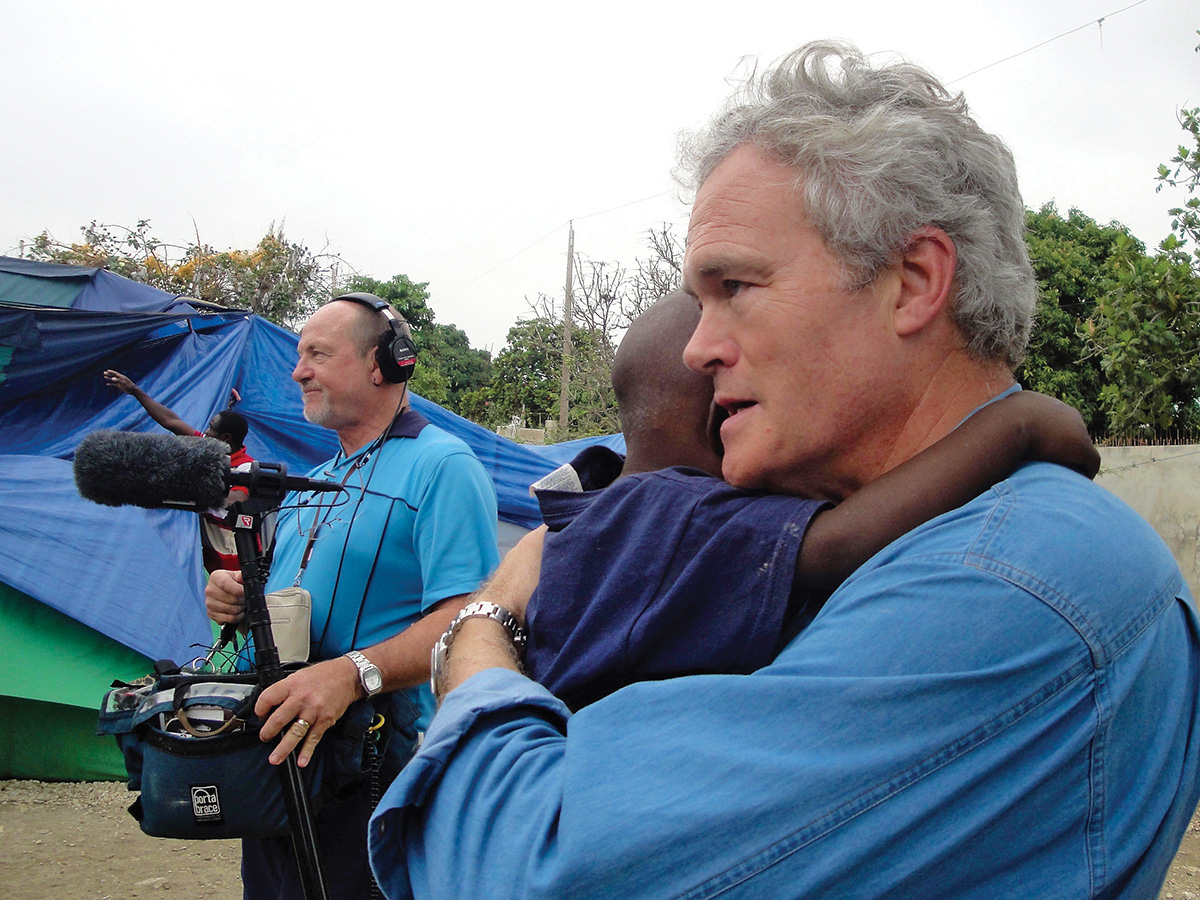
In 2010, we visited children orphaned by the cataclysmic earthquake in Haiti. The orphans named me “Papa soft hair.” They were eager to leave with me, wherever that might be. It seemed so unfair that such a catastrophe would strike a country already among the poorest on earth.
Photo credit: Nicole Young
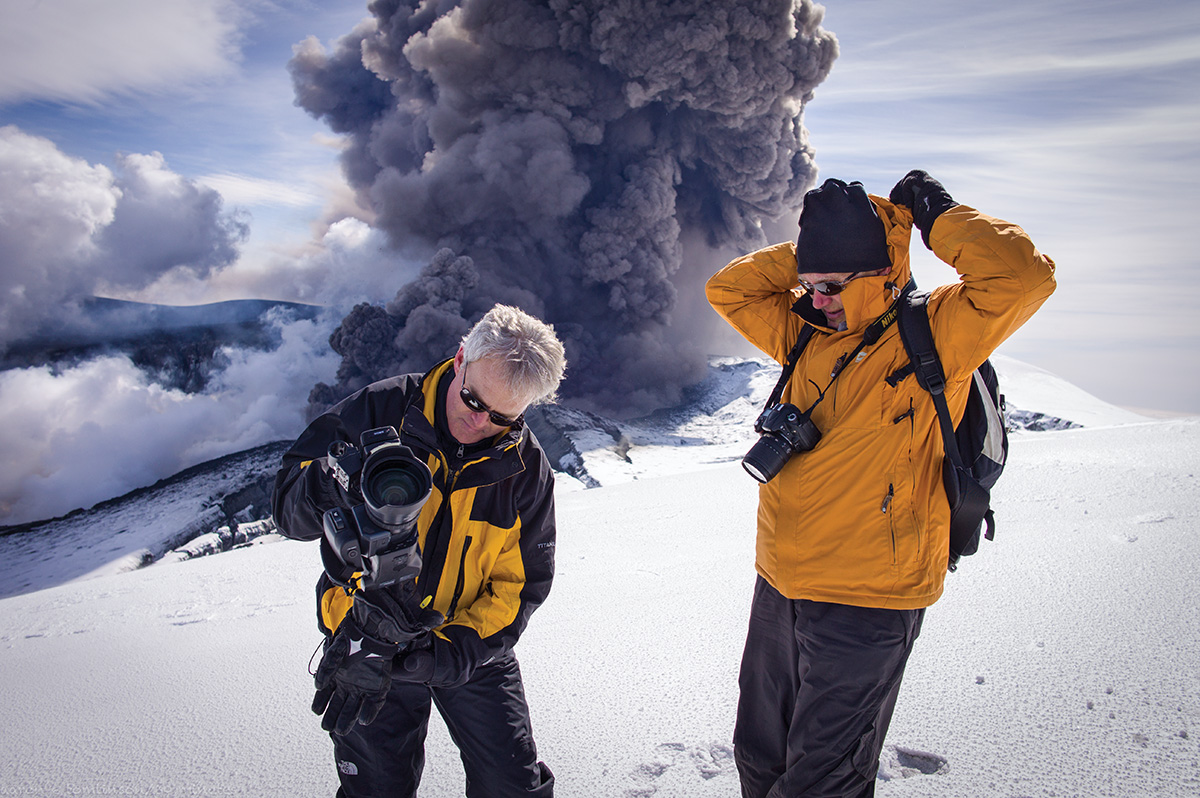
In 2010, I trekked to the top of the erupting Eyjafjallajökull volcano in Iceland. My guide was world-renowned volcanologist Haraldur Sigurðsson. He taught me much about geology but was never able to teach me how to pronounce Eyjafjallajökull.
Photo credit: Aaron Tomlinson
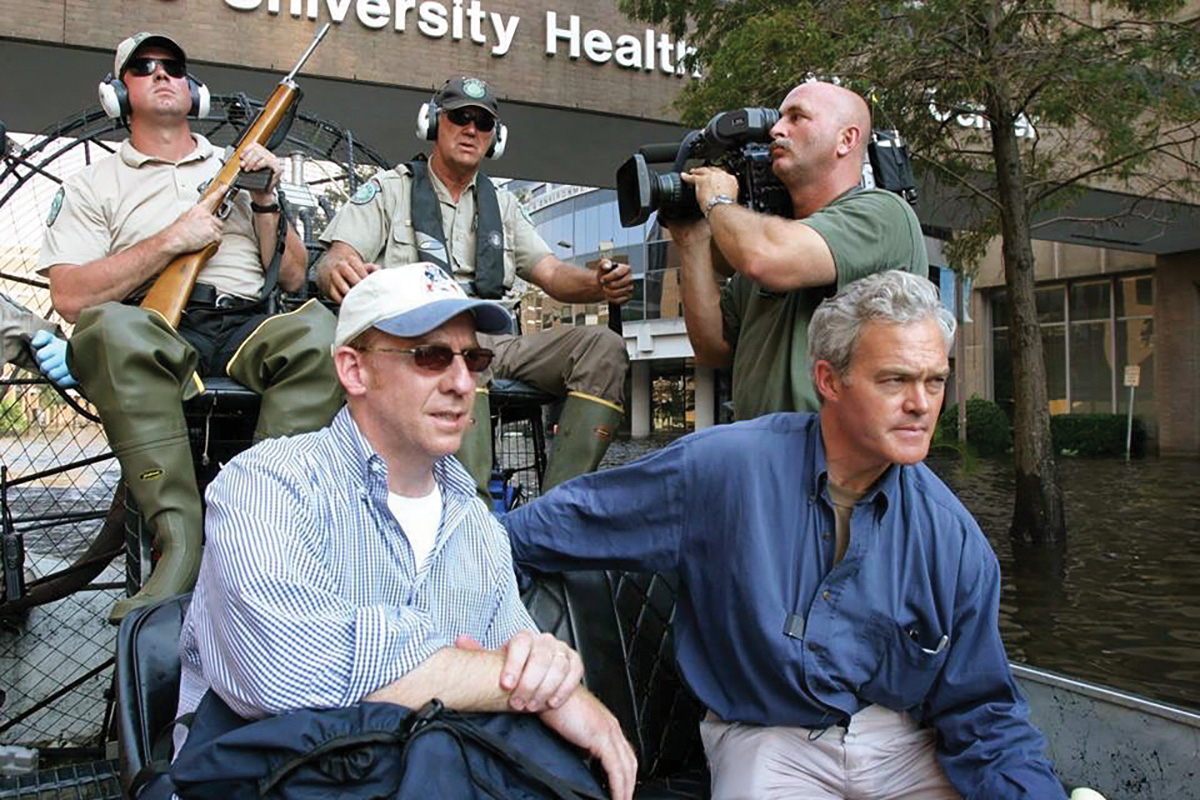
Producer Bill Owens and I hitched a ride on an airboat in downtown New Orleans after Hurricane Katrina. A few yards ahead of us, we came across a poor soul who had drowned in the flooded street. Cameraman Dennis Dillon has been our indispensable companion on many of the toughest assignments.
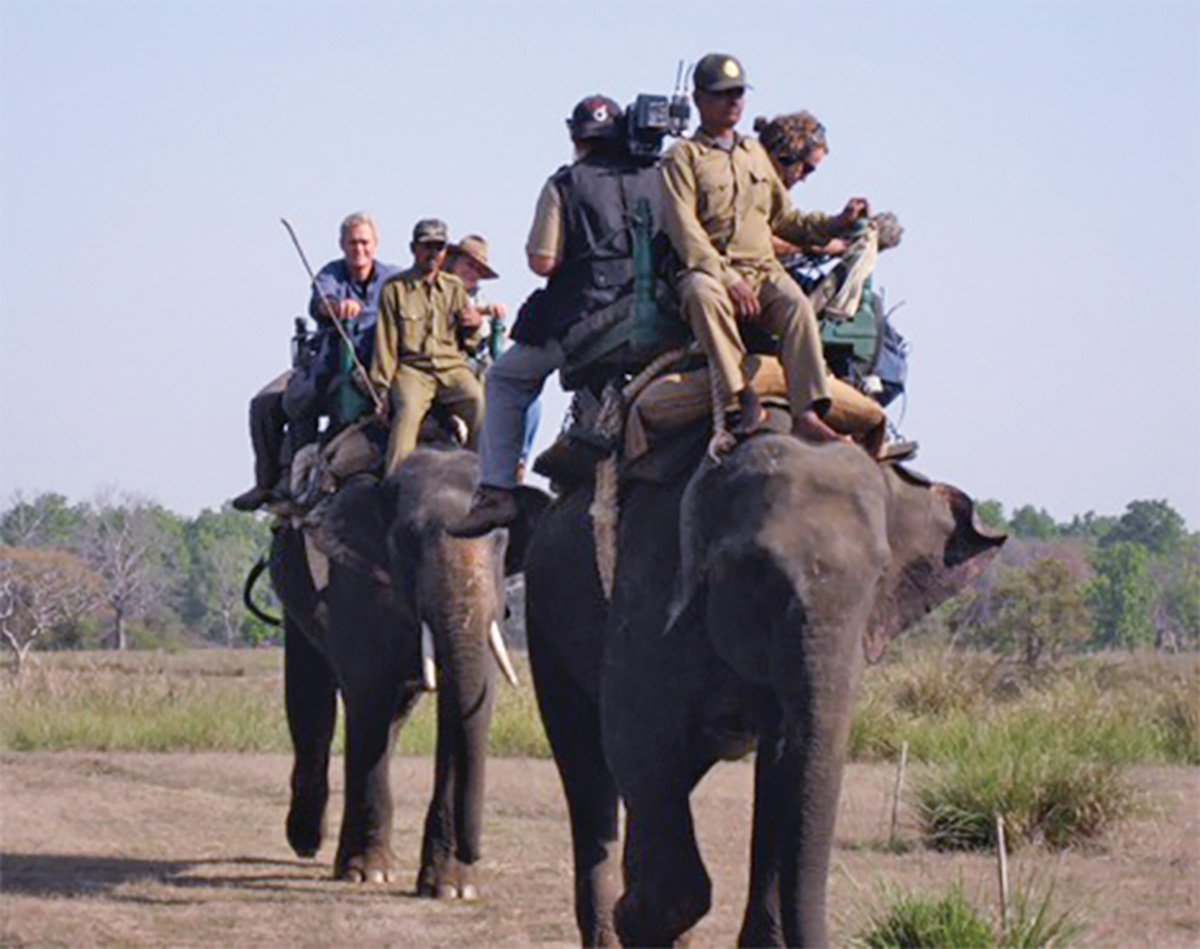
I’ve taken every kind of vehicle to reach our stories, from submarines to elephants. In India, this is the best vehicle to hunt for tigers. Somehow, the elephants don’t mind the tigers and the tigers pay no attention to the elephants. Chris Everson and Anton van de Merwe are on the “camera elephant” shooting me and renowned photographer and naturalist Belinda Wright.
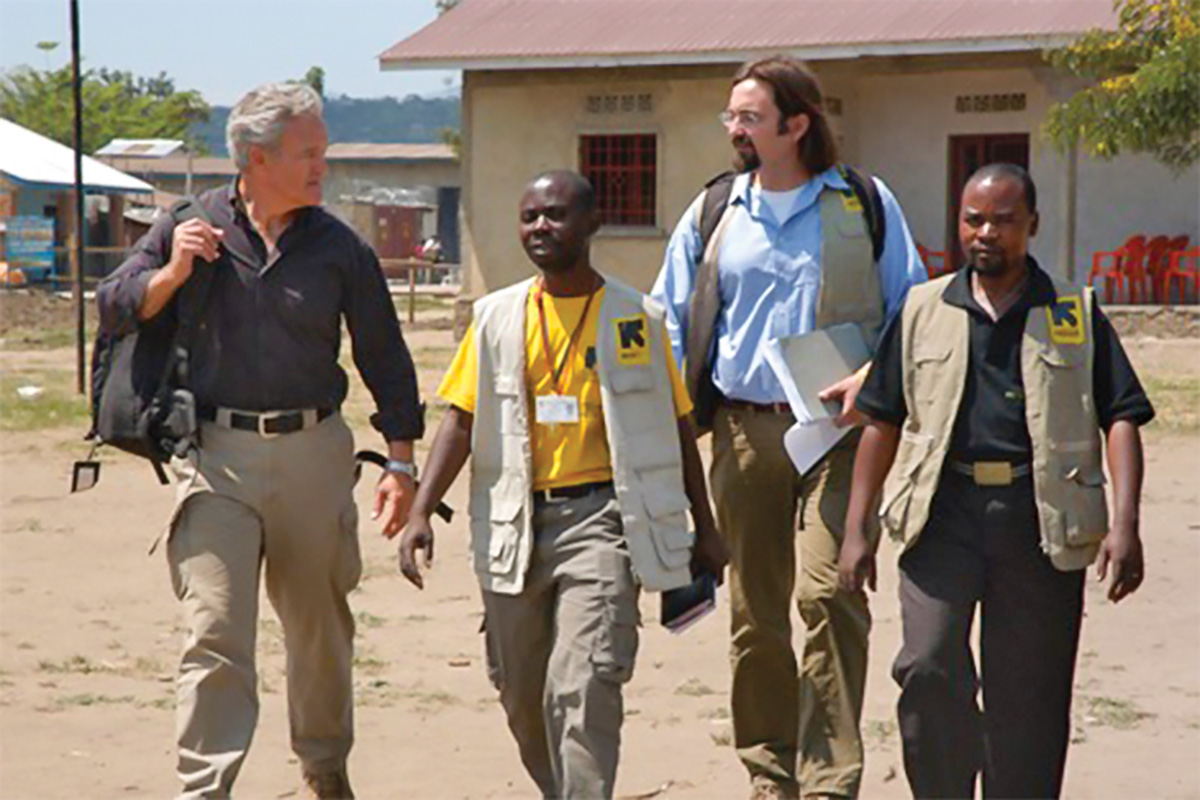
Outside of my work, I spent many years on the board of the International Rescue Committee. The IRC was founded at the suggestion of Albert Einstein to rescue Jews from Nazi-occupied Europe. In the decades since, the IRC has sheltered refugees in war zones and helped many become successful citizens of the United States. I witnessed these courageous and selfless humanitarians protect refugees from harm in Afghanistan, Thailand, Kenya, Haiti and Iraq. Here, I conferred with the IRC team in a Democratic Republic of Congo refugee camp.
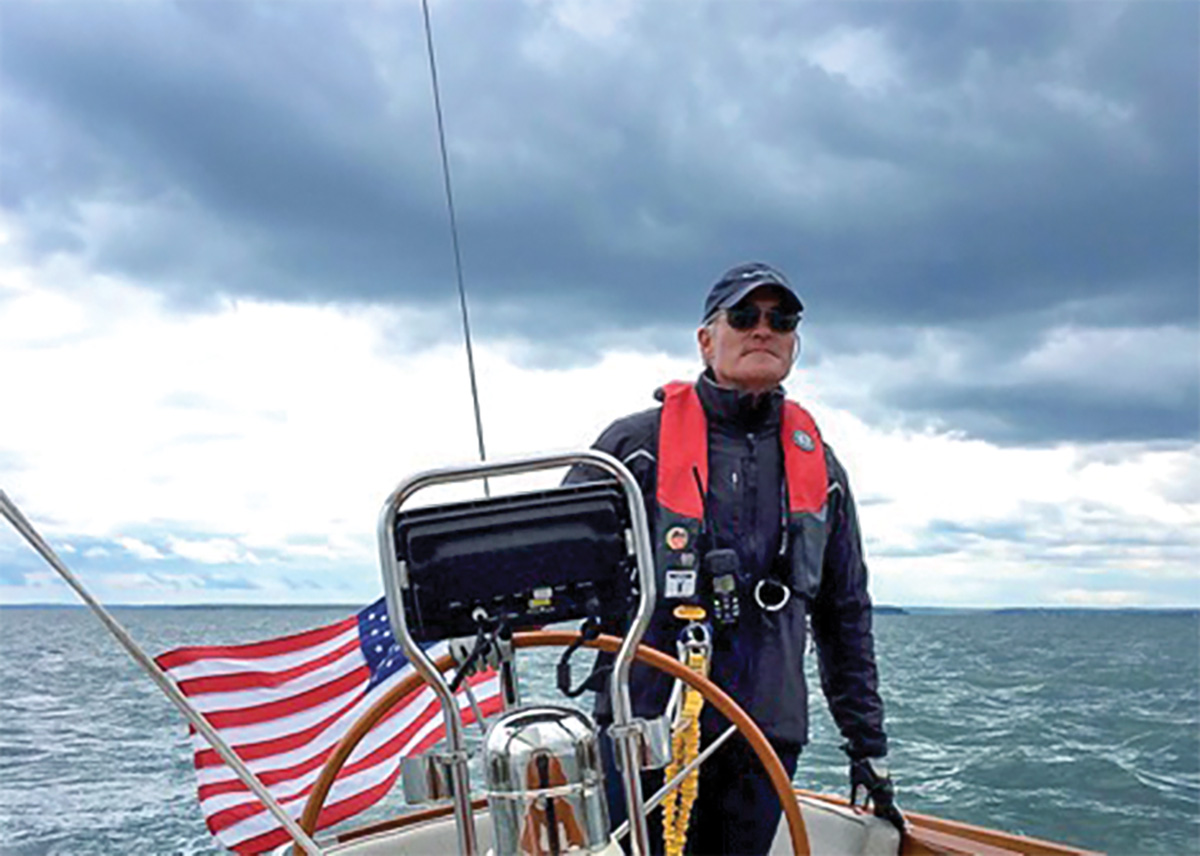
Not as often as I would like, I leave the demands of journalism onshore and sail our little family sloop, Boundless Blue. Her name derives from Walt Whitman’s “In Cabin’d Ships at Sea.”
Photo credit: Jane Pelley